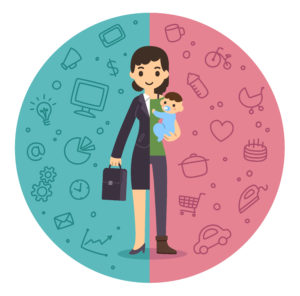
I propose to write a commentary for the Sydney Morning Herald for either the lifestyle>life & relationships or gender section of the online newspaper. The target audience for this article is working parents with families.
Why is this topic timely?
Across the country the coronavirus outbreak has caused major upheavals in working environments. Hundreds of thousands of Australians have lost their jobs in the retail and hospitality sectors and those who still have a job have been forced to work from home. This restructuring has forced companies to rethink how their businesses operate. For example, Optus has made the decision to permanently transition all of its Australian helpdesk employees to a working-at-home model.
The pandemic has created a situation where employers have had to adapt. This serves to benefit working parents and especially mothers who have long been calling for a rethink on the working week, traditional working hours, and more flexible working arrangements. According to Australian Government statistics, 68.7 per cent of part-time workers are women. Furthermore, in a report by the Australian Women’s Working Futures Project, 62% of women cite flexibility as one of the most important attributes for a job.
The fact that the government has made childcare free is an admittance of how essential childcare is for people to be able to work.
The question is will we return to the traditional nine-to-five working model after the coronavirus threat is over and what will we have learnt? Will companies permanently change their attitudes towards flexible working hours and working from home and will this allow working mums to play a greater role and take on more responsibility at work?

Illustration: By Sudowoodo (Shutterstock: All rights reserved)
How will the article be structured?
The structure for this commentary will start with an overview and discussion of women’s role in the workplace based on industry reports and government statistics. I intend to conduct further research on changes to working environments as a result of the COVID-19 isolation, in terms of both the positive and negative effects. Finally, I will attempt to draw some conclusions as to how a post-pandemic work environment might look.
Research and interviews

I will interview Lucy Adamson, who is a director at Ernst & Young, one of the Big Four accounting firms, and an advocate for flexible working arrangements. I also intend to approach academics in the field of gender, work and employment relations, such as Professor Marian Baird and/or Professor Rae Cooper of the University of Sydney Business School for their comments on the effects of the pandemic on women and work.
I will also use resources from the following organisations to conduct further research:
- Articles from mainstream newspapers e.g. the Guardian, the SMH, The Australian, ABC etc.
- The Harvard Business Review
- The Conversation
- Women’s Agenda
- Workplace Gender Equality Agency
- Diversity Council Australia
- The Australian Financial Review
- Australian government statistics e.g. the Workplace Gender Equality Agency
- The Australian Human Rights Commission
Interactivity and multimedia
I intend to use the following multimedia to illustrate points made in the article:
- Hyperlinks to further expand on the points made and provide the reader with more in-depth reading around the topic.
- Embedded video content from YouTube.
- Images/videos of the interviewees and of new working-at-home environments.
- Infographics and statistics to present information in a clear and user-friendly format.
- Comments section to allow readers the option of giving their opinion.



I am very happy that we have paid similar attention to the business and working life of the Australian people during the COVID-19. It is very good that you have paid attention to the rights of women in the unemployed! But I noticed that you are also watching the rights of children and men at the same time, which makes me worry about whether your feature will not comprehensive enough. My suggestion is that you can focus on one aspect of rights and interests, such as women work rights, or relief guarantees for unemployed women during the epidemic, etc. In addition, I think that it is also a very good choice to pay attention to the rights and interests of children ’s education. Maybe you can start from school timetable and how children receive curriculum education at home, and look forward to your final feature!